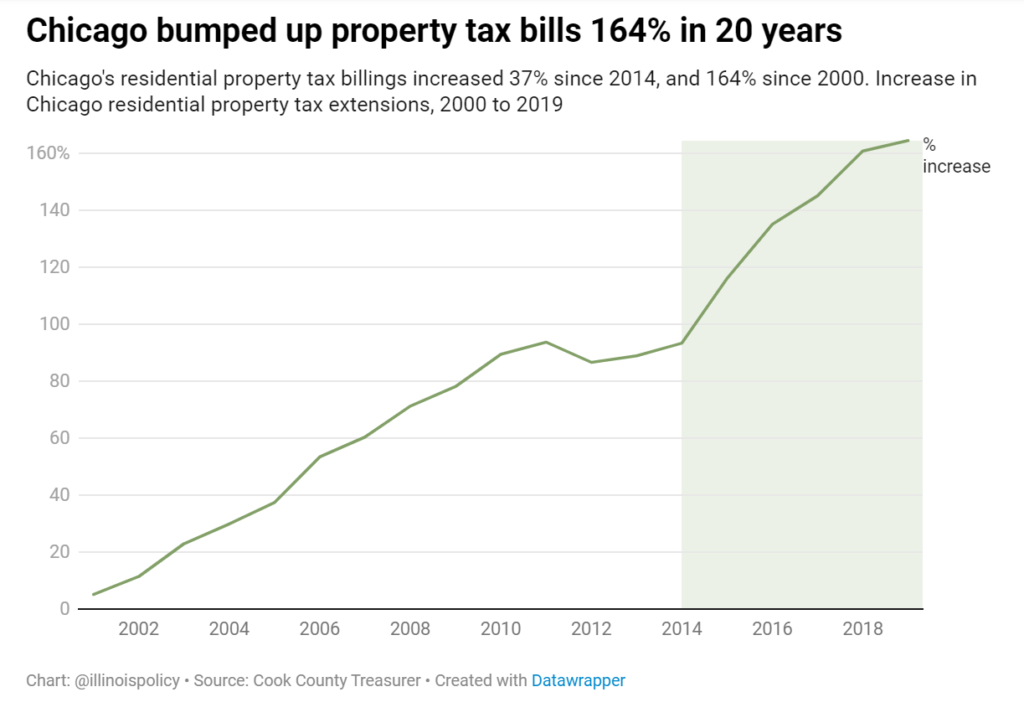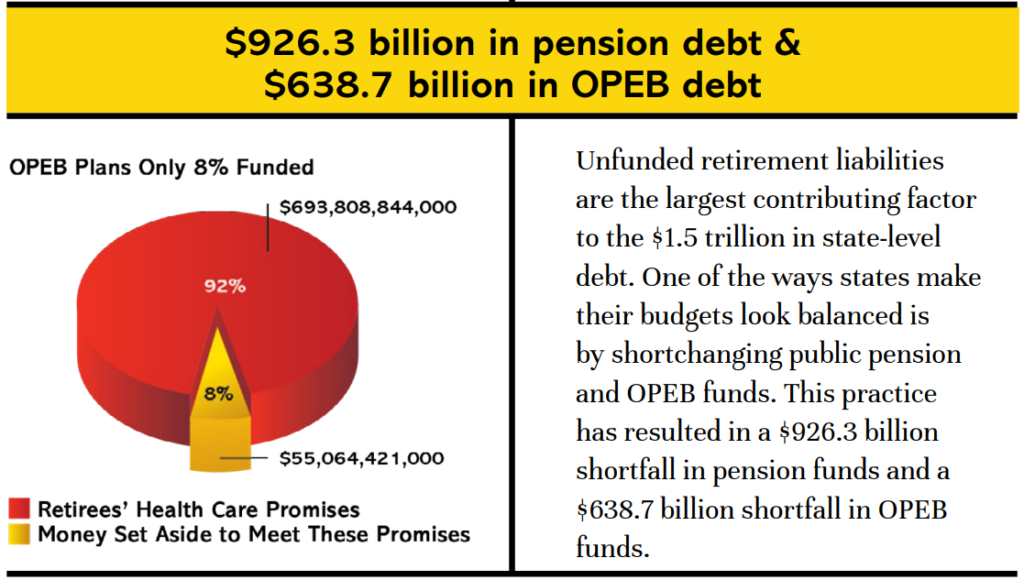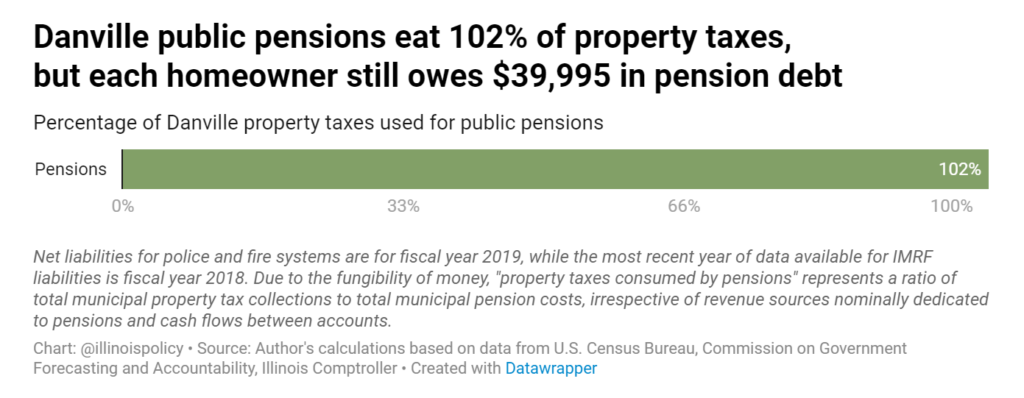Graphic:

Excerpt:
Chicago residential property tax collections across all units of government in the city were up 164% from 2000 to 2019.
Property taxes paid by homeowners within the city grew nearly 30% faster than property taxes in suburban Cook County during those 20 years. Suburban residential property taxes grew 116% while total residential property tax collections county-wide grew 133%.
While some of Chicago’s increase was driven by new property or growth in existing property tax values, the average homeowner still saw an 85% increase in their bill from 2000 to 2019. Since the record-setting 2015 property tax hike to pay for pension debt, the average Chicago bill has risen 27%. Prior to that hike, property taxes were on a lower trend from 2011 to 2014.
Author(s): Adam Schuster
Publication Date: 28 Feb 2022
Publication Site: Illinois Policy


